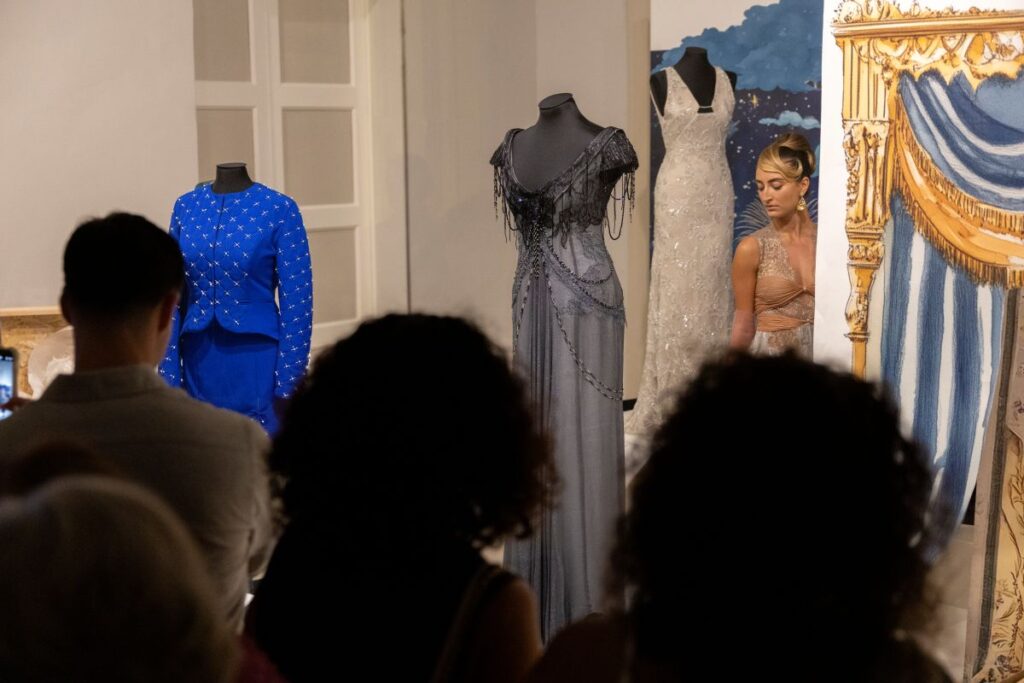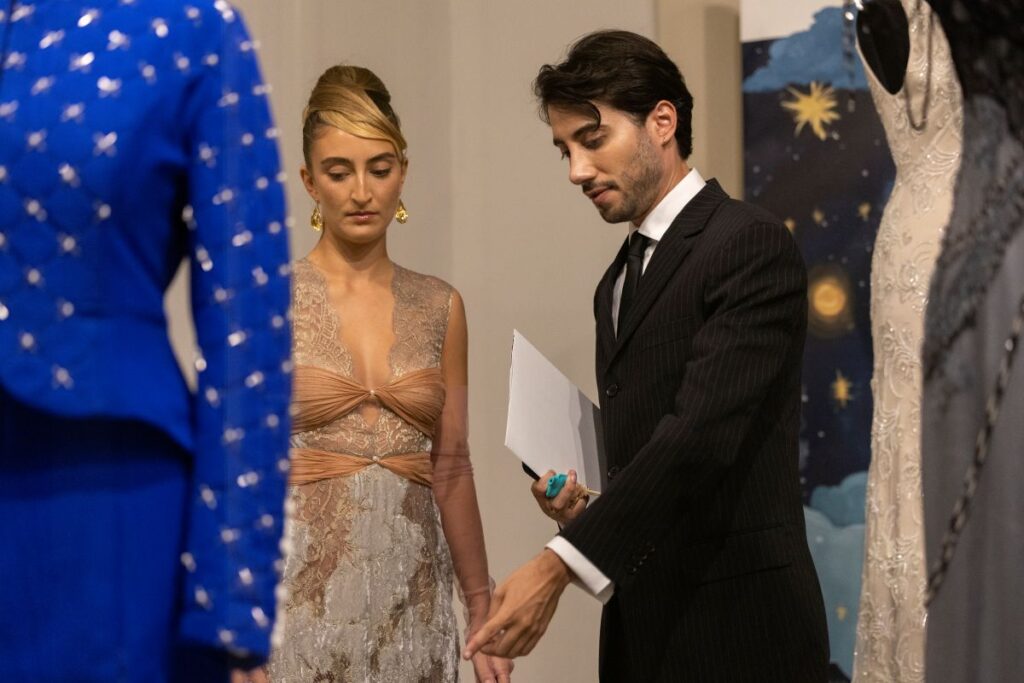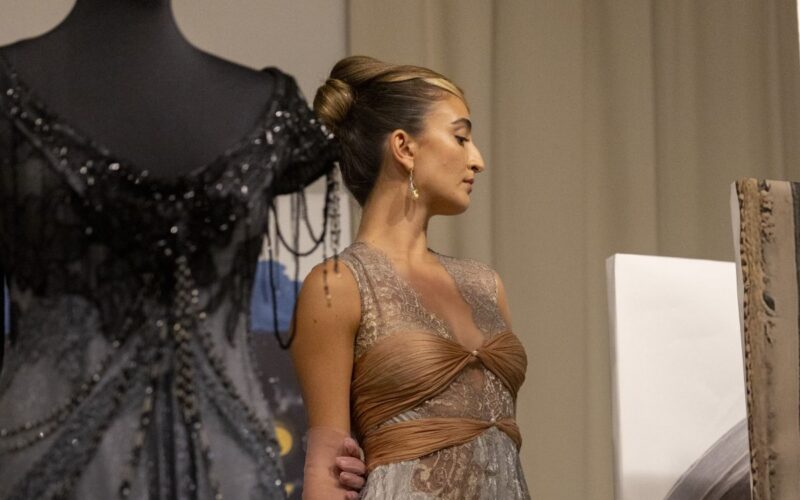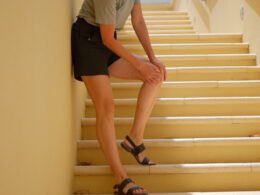The ‘set design’ is ‘reminiscent of a theatre box’. Why did you choose to present the show this way?
The set was a gift for the studio, conceived as a space that blurs the line between stage and gallery, evoking the intimacy and framing of a theatre box set. This presentation set the perfect stage to draw from the Victorian fascination with the diorama, where miniature scenes behind glass became objects of curiosity and wonder. In this context, the glass cabinet format mirrors that sense of intrigue, offering visitors a framed view into a curated world.
The concept came to life on the opening night, when a model dressed in one of the studio’s latest creations moved among the artefacts, animating the static display and merging performance with exhibition.
Tell us about the four couture gowns and the historical pieces to which they respond. Why did you choose those four pieces from the national collection?
The four gowns, Anubis Gown II, Luxor Gown III, Snakeroot Dress and the Quilted Moiré Suit, respond directly to an original evening gown in blue tulle and taffeta by American designer Will Steinman, dating to the mid-20th century and part of Malta’s National Textiles Collection.
The archival piece, once owned by Peggy Mamo and later donated in her honour by her niece Claire Pisani née Hughes, offered both elegance and structural drama that inspired the contemporary interpretations.
Each gown design by Azzopardi Studio reflects a 1920s revival aesthetic, drawing on Art Deco geometry, alchemical and tarot symbolism. The designs layer past and present through fabric, silhouette, and motif, with colour palettes and textures chosen to evoke both the glamour of the original and the new narratives each piece inhabits.

Why have you included alchemical symbolism and tarot iconography in the designs?
The collection incorporates symbols drawn from both alchemy and tarot as a means of exploring transformation, cycles and the pursuit of hidden knowledge, ideas that parallel the couture process itself.
Alchemy’s stages of transformation are reflected in colour progression, from deep shadowed tones to luminous metallics, suggesting the journey from base matter to silver and gold.
Tarot imagery appears in embroidered motifs and structural details: the High Priestess in layered veils, hinting at intuition and mystery; the Wheel of Fortune in circular beadwork, symbolising fate and the turning of time.
These elements are not literal illustrations but abstracted forms, allowing the garments to carry an undercurrent of narrative that viewers can interpret for themselves.
Why did it feel important to weave the night sky into the gown designs?
Dusk acts as an invitation to the night, and in this collection the colour schemes move gradually from lighter, ethereal tones to deeper, more saturated hues, echoing the way the mind drifts from wakefulness into sleep. This progression mirrors the Victorian fascination with twilight as a threshold, a moment when the boundaries of reality soften and imagination takes hold.
In 19th-century dioramas, changing light effects would carry viewers from daylight into night, transforming the scene into something otherworldly. In a similar way, the gowns embrace the language of the night sky: beadwork scattered like constellations, shadowy layers recalling distant horizons, and a sense of quiet wonder that invites each visitor into their own dreamscape.

What do you hope to inspire in visitors to the exhibition?
We hope visitors feel a sense of discovery, as though they have stepped into a moment suspended between eras. Beyond the immediate beauty of the gowns, the aim is to invite curiosity, contemplation, and a deeper engagement with the craftsmanship. There is also an element of intimacy: the idea that each viewer may find their own reflection or story within the work, allowing the exhibition to resonate on a personal as well as a collective level.
Couture and Spectacle is ultimately a dialogue: between the past and the present, between garment and viewer, and between the worlds of museum and atelier. It is an invitation to consider fashion not only as adornment, but as a living artefact, one that continues to evolve, inspire, and connect us to the stories woven into its fabric.
Couture Azzopardi Studio (Luke Azzopardi)
Couture and Spectacle runs until September 30. It was produced by Heritage Malta. The Heritage Malta Curator for Costumes and Textiles is Annamaria Gatt and the Heritage Malta Senior Curator of Ethnography, Kenneth Cassar. Heritage Malta Textile Conservation: Claire Bonavia and Leyre Quevedo Bayona, Exhibition Design: Philip Sultana and Event Production by Tamara Burr. Additional thanks to BASE and Hannah Theuma.










